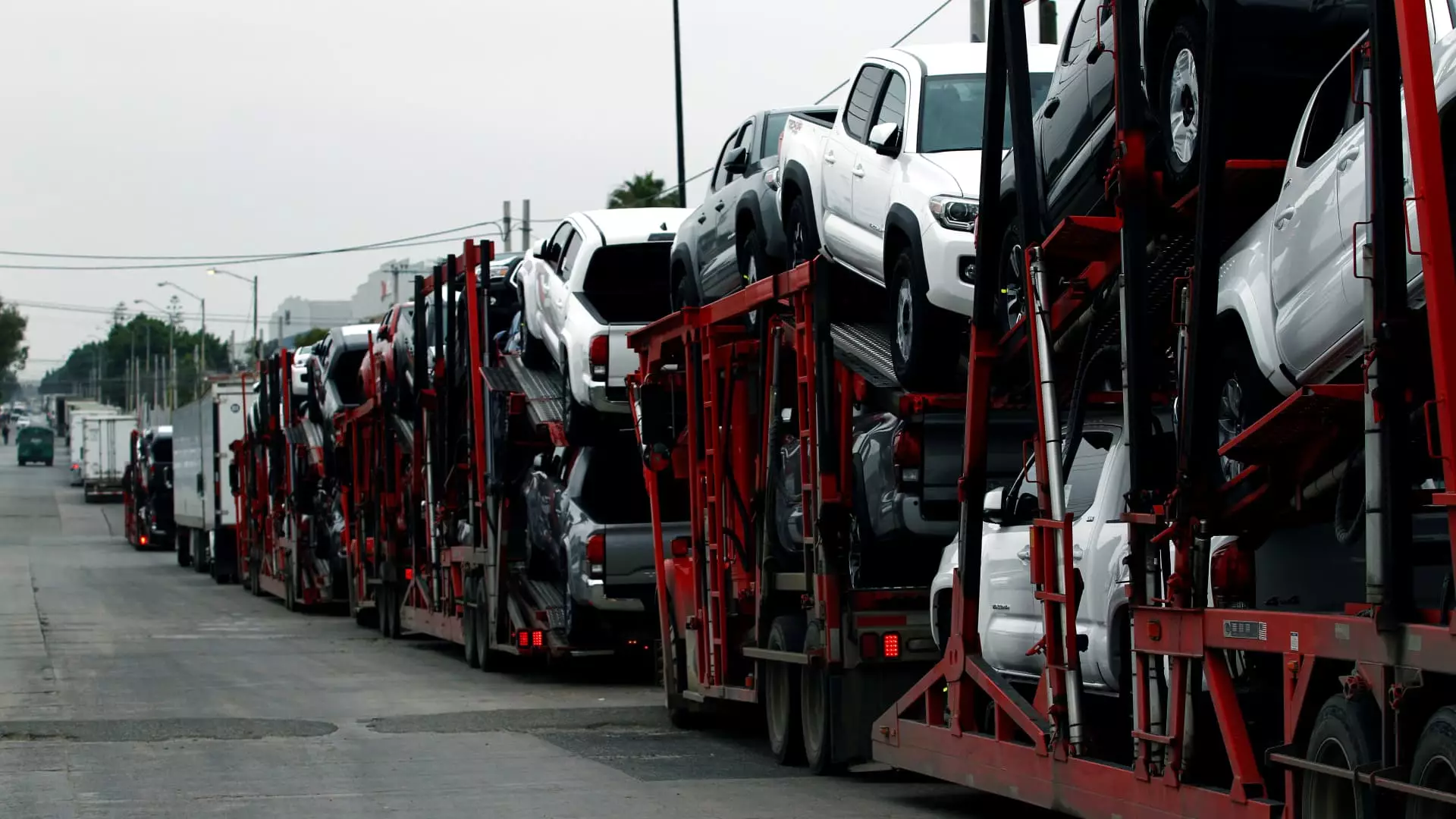In a period marked by economic unpredictability and trade tensions, the automotive industry finds itself at a crossroads. Following President-elect Donald Trump’s announcement of potential 25% tariffs on goods imported from Canada and Mexico, the stock values of prominent automakers such as General Motors (GM) and Stellantis bore the brunt of the market’s response. These tariffs, if implemented, have the potential to disrupt the established supply lines that automotive companies have relied upon for decades, particularly since the advent of the North American Free Trade Agreement (NAFTA) in 1994.
The relevance of this trade deal cannot be overstated. It facilitated a significant shift in automotive manufacturing, allowing companies to capitalize on lower labor costs in Mexico, thereby enhancing their competitive edge against international rivals. It is important to note that according to UBS, nearly one-quarter (26%) of U.S. imports from Mexico account for automotive products that include vehicles and vehicle parts, with about 12% linked to Canada. This data highlights the integral role that cross-border trade plays in the U.S. automotive landscape.
Following the tariff announcement, stocks across the automotive sector took a notable dip. GM’s shares plunged over 8%, reflecting investor anxiety regarding the company’s operations and forecasted profit margins in light of these tariff threats. With five substantial assembly plants projected to produce 1 million vehicles in 2023, the immediate financial repercussions were clear. Stellantis, another manufacturing giant with a presence in these regions, experienced a share price decrease of more than 5%. Even Ford, which has less exposure to the affected markets, saw a dip, showcasing the industry’s interconnectedness and the overarching effects of policy shifts on stock performance.
Moreover, the declines were not limited to American automakers. Shares of foreign businesses like Toyota and Honda were also adversely affected, suggesting that the ripple effects of U.S. tariffs penetrate beyond domestic markets and influence global automotive operations.
Trump’s announcement of the proposed tariffs coincides with his expected inauguration, underlining a potential strategy to reshape trade dynamics aggressively. This assertive rhetoric seeks not only to intimidate but to create leverage in negotiations. Analysts suggest that the intention behind this posturing is to reclaim a favorable negotiating position ahead of expected discussions regarding the future of trade agreements with Canada and Mexico.
BofA Securities analyst Carlos Capistran views these tariff threats as strategic maneuvering by the incoming administration rather than concrete policy intentions. This sentiment is echoed by Barclays’ Dan Levy, who insinuates that such drastic measures are likely exaggerations aimed at reinitiating discussions on trade agreements. In essence, these tariffs may function more as gambits in a larger geopolitical chess game than as actual policy shifts.
In the broader landscape, this impending trade shift raises critical questions about manufacturing and operational strategies within the automotive sector. The historical reliance on cross-border manufacturing, particularly in Mexico, illustrates potential vulnerabilities that could be exploited in light of protectionist policies. Automakers may need to reassess their logistical frameworks, production costs, and procurement strategies to navigate a rapidly changing landscape characterized by tariffs and trade agreements.
As the automotive industry transitions from its ‘capital junkie’ behavior—marked by heavy investment in aggressive expansion and production—companies are under pressure to realign their focus on sustainability and operational efficiency. The prospect of added tariffs might serve as a catalyst for innovation in the sector, prompting a reevaluation of supply chains, localization strategies, and technological advancements.
The potential introduction of tariffs on goods imported from Canada and Mexico presents a precarious situation for the U.S. automotive industry. With the stakes high and the ramifications far-reaching, automakers must prepare for a transformed trade environment and adjust their strategies accordingly. The coming months will reveal not just the fate of these tariffs but also the capacity of industry players to respond dynamically to political pressures and changing economic realities. The future of the automotive industry stands uncertain; yet, it is within these challenges that opportunities for adaptive innovation and growth can emerge.


Leave a Reply